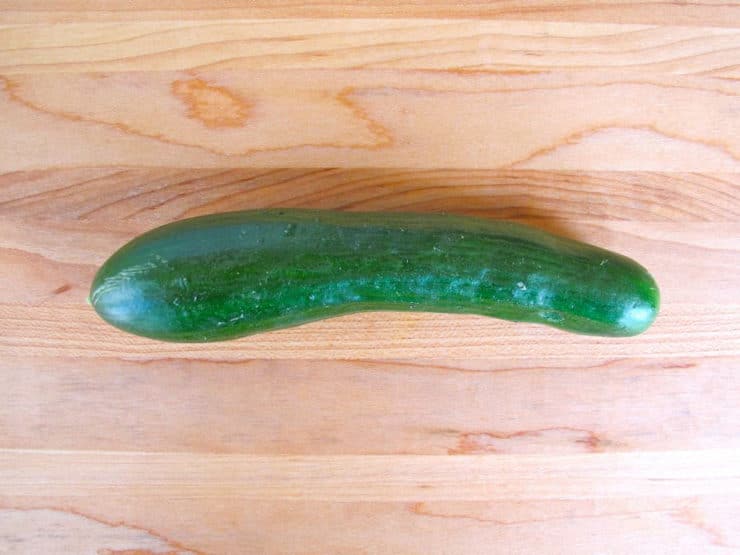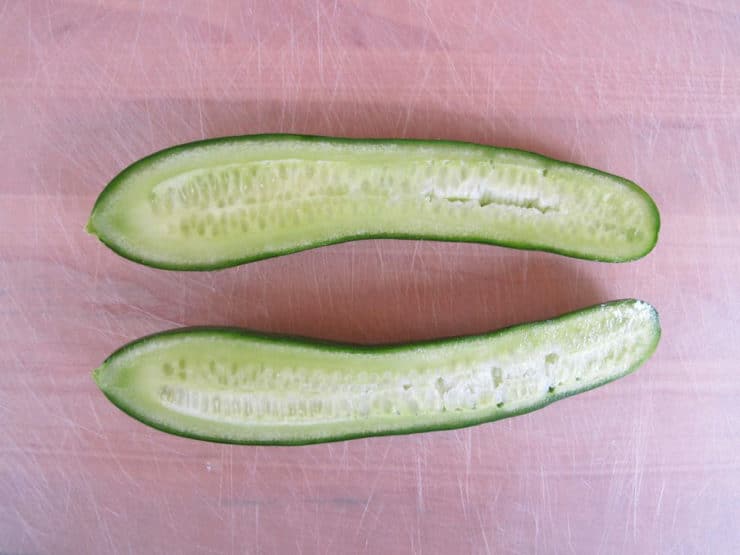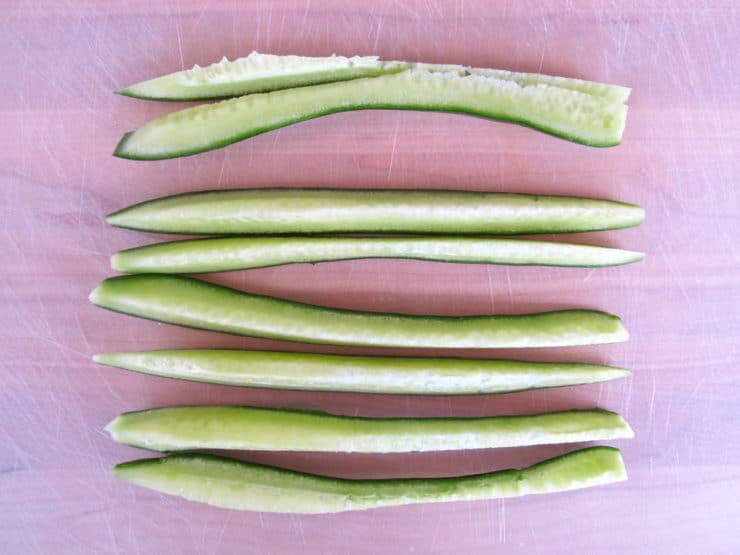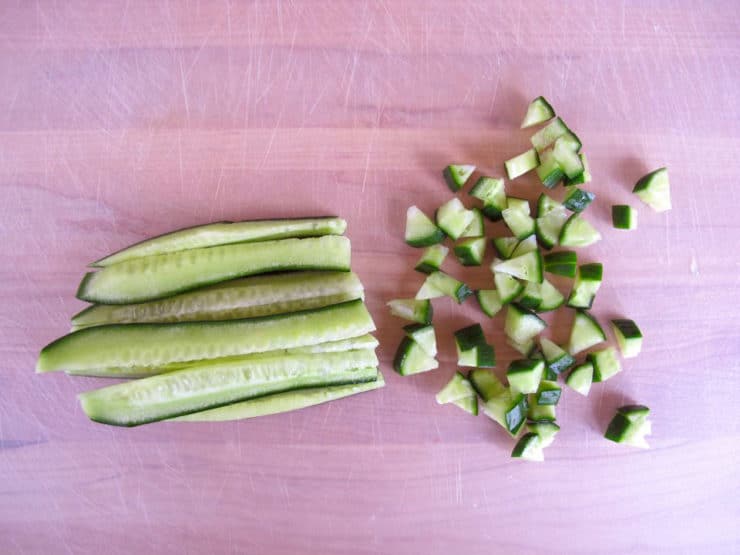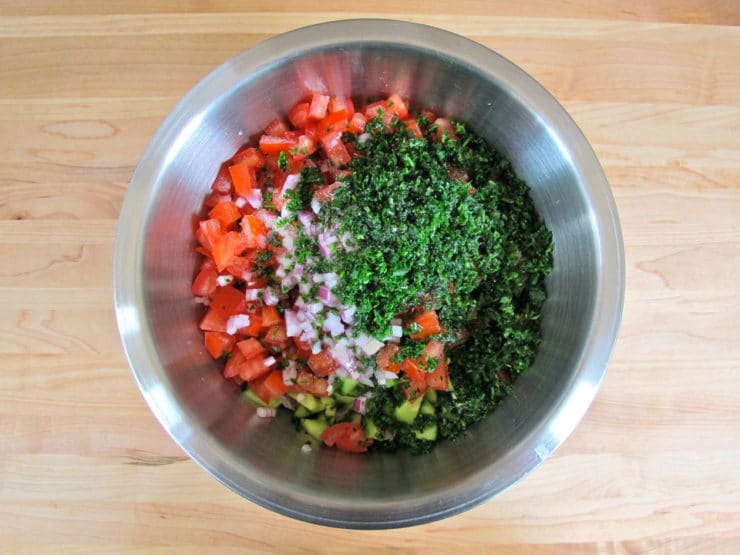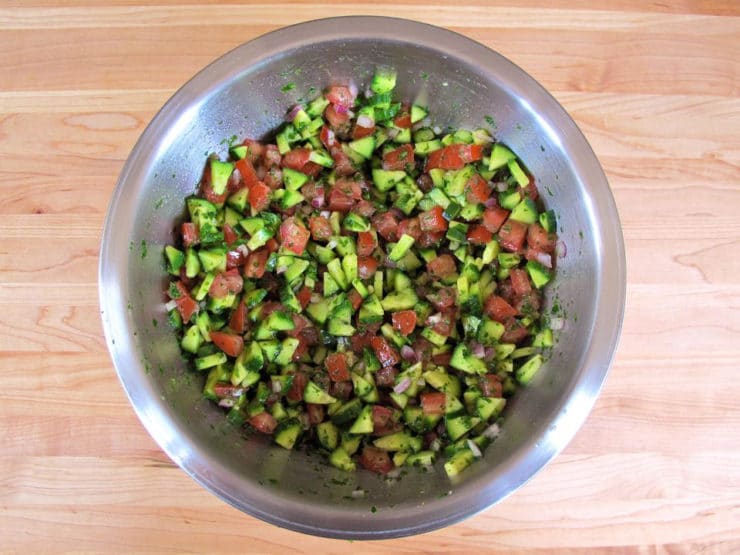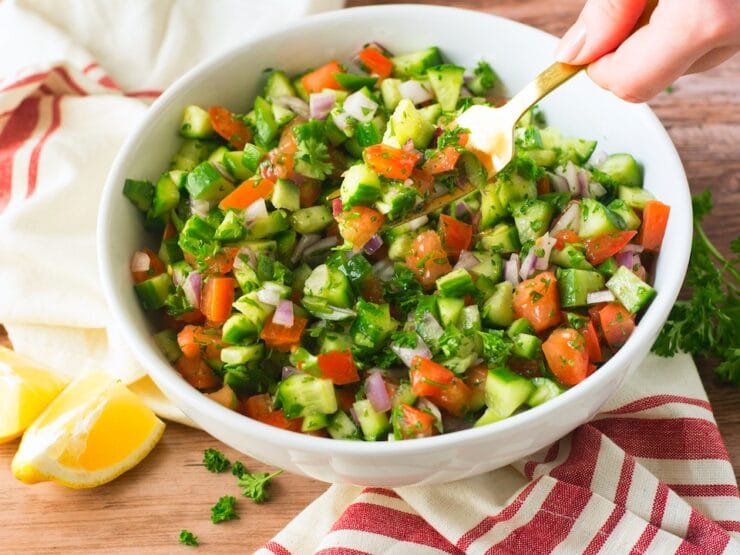Israeli salad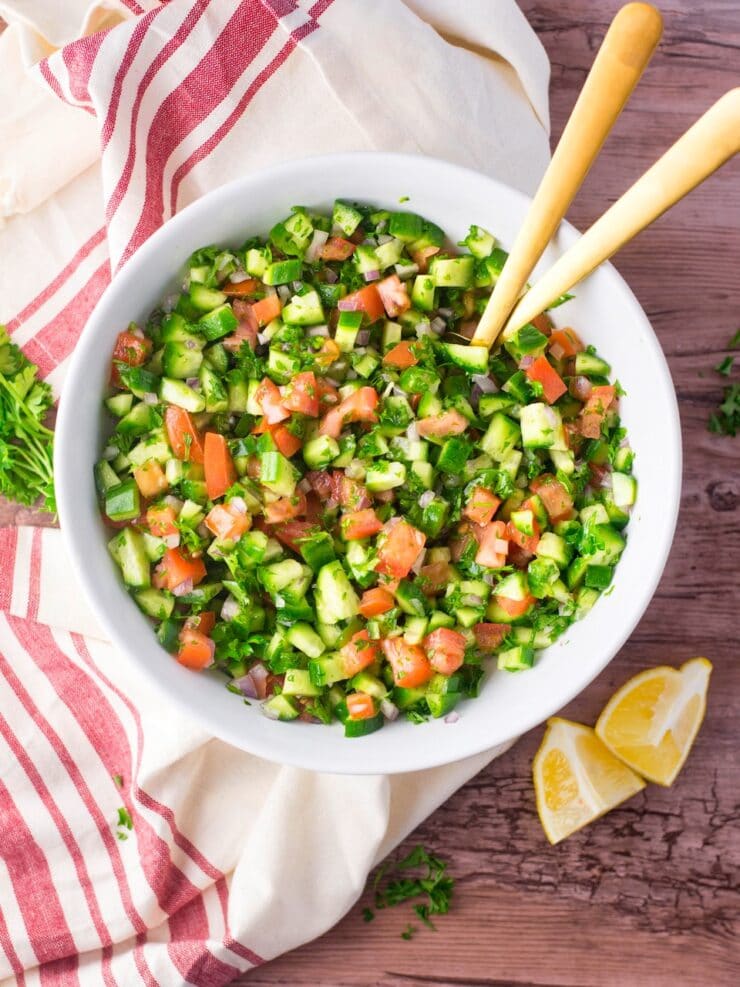
Israeli saladIsraeli salad is a dish that is ever-present in my kitchen. It’s easy to make, inexpensive, and surprisingly delicious. In summer, I serve it alongside grilled fish or kebabs. In colder weather, I use it as a healthy side to lighten up heavy meals. I also serve it with breakfast sometimes, it goes great with an herby egg and cheese omelette! For those of you who aren’t familiar with Israeli Salad, here’s a little background. It evolved from a Turkish salad known as shepherd’s salad coban salatsi, which is closely related to a Persian salad known as salad shirazi, named for the ancient city of Shiraz. The salad is known under different names with slight ingredient variations throughout the Middle East. When Jews began making aliyah to Israel in the late 1800′s, coban salatsi from Israel’s Turkish neighbors became popular on the kibbutzim (communal agricultural collectives) because of the simple, easy-to-grow ingredients cucumbers, tomatoes, onions, peppers, and parsley. Over time, ingredients were added or taken away, but the basic components remained the same: cucumbers and tomatoes dressed in olive oil, lemon juice, and salt. The vegetables are always diced; the size of the pieces varies depending on personal preference. Some cooks prefer to dice the vegetables very small, a practice that started in the Ottoman Empire. Other cooks prefer a more chunky texture. I like it both ways. Although this salad has different names throughout the Middle East, my family refers to it as Israeli salad because of my husband’s Sephardic background. It is a refreshing side dish that complements all kinds of main dishes. It is low in calories, dairy-free, and can be served with any meal even breakfast! Each ingredient in the salad has unique health benefits. Fresh Persian cucumbers (peel on) are fat-free, full of water, and a good source of fiber. Fresh tomatoes provide Vitamin C, A, and cancer fighting lycopene (organic tomatoes provide up to three times the lycopene of non-organic!). Onions are rich in chromium, a trace mineral that helps cells respond appropriately to insulin. Onions can lower blood sugar levels, and they’ve also been shown to help lower cholesterol and blood pressure. Fresh parsley is a great source of Vitamin K. It also contains Vitamins C and A, Folate, and anti-oxidants. Lemon juice is full of Vitamin C, antioxidants, and potassium. It’s also a natural diuretic. Olive oil provides a healthy dose of MUFA’s (mono unsaturated fatty acids) and can help with digestion. One of the main ingredients in Israeli salad is Persian cucumbers. Smaller and sweeter than English cucumbers, they are great for snacking. Here’s what they look like: Cute, huh? I’m a big fan of these little guys. If you can’t find Persian cucumbers, you may substitute English cucumbers—those are the long thin ones wrapped tightly in plastic. Avoid using regular fat cucumbers, as they are coated with wax and prone to bitterness. There are many creative variations on Israeli Salad; I’ll link to a few of my favorites below. I try to use seasonal produce in my cooking, and I often experiment with whatever looks freshest in the vegetable section or at the farmer’s market. Adding seasonal or regional ingredients can really “spice up” your Israeli Salad. Before I get into variations, here’s a recipe for a simple Israeli Salad. I don’t like raw onion, so I often make mine without. Our family enjoys it both ways. Be sure to dice the vegetables small and evenly I’ve given my tips for slicing Persian cucumbers below. DescriptionThis salad recipe from Israel is versatile and tasty. Persian cucumbers, tomatoes, parsley, olive oil, lemon juice, onion. Vegan, kosher, pareve. Ingredients
Instructions
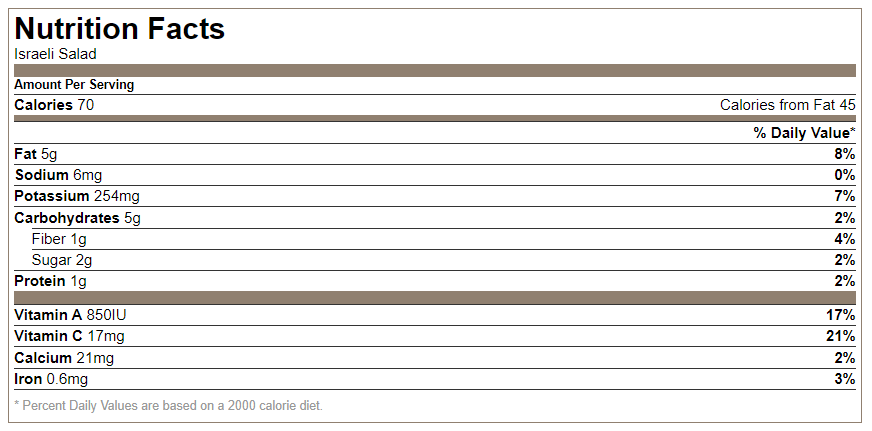
Source: toriavey.com Israeli salad |
|
|

